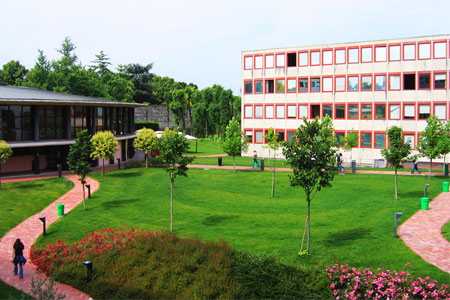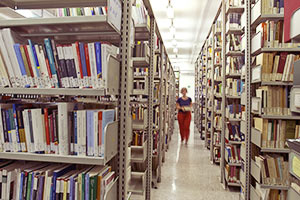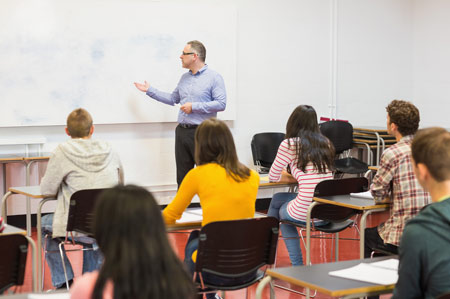Course not running

- Course code
- 4S002897
-
Name of lecturer
-
Fabio Forner
- Coordinator
-
Fabio Forner
- Number of ECTS credits allocated
-
6
- Academic sector
-
L-FIL-LET/10 - ITALIAN LITERATURE
- Language of instruction
- Italian
- Location
- VERONA
- Period
-
Semester 1 dal Oct 2, 2017 al Jan 20, 2018.
Lesson timetable
Go to lesson schedule
Learning outcomes
The main aim of this course is to give an introduction to the history of the Italian literature through the direct analysis of a corpus of texts on issues of particular interests. Special attention will be given to the authors of the Eighteenth century.
At the end of the course the student will be able to
- contextualize, understand and comment autonomously a literary text;
- look at literary text as a complex body, in constant dialogue with other areas of Western culture and in particular in close relation with the editorial world that allows its spread and success;
- move with competence in the framework of Italian literary tradition and its main thematic and formal characteristics, with particular attention to intersections with European literatures.
With regard to attending students, teaching methods consist of frontal lessons dedicated to the thematic areas of the course. In the classroom, students' active and attended participation will be encouraged, including through works submitted by students, guided lessons and textual analysis.
The e-learning platform is used for active communication between teacher and students and to provide anthology of texts and additional support material.
With regard to non-attending students, teaching methods consist of a teacher's support to the study of the texts. Any further updates will be made available in good time to the student through the e-learning platform.
Throughout the academic year, there is also an individual reception service handled by the teachers, at times shown on the web pages and constantly updated.
Syllabus
The course will begin with an introduction to the method of study and research in literary subjects. A brief introduction to the Italian literature of the eighteenth century will be given. Students will be required to know the main lines of the history of Italian literature in the eighteenth century: to prepare this part the student could use a good history of Italian literature for the high schools; for example: ALBERTO BENISCELLI, Il Settecento, Il Mulino, Bologna.
2) The course will focus on the relationship between literature and publishing in the 18th century, and attention will be given to the most popular kind of literature in the 18th century, the epistle, which was also preferred by publishers. To prepare this part, the student will use the notes taken in class, and will integrate with the reading of parts of the following text:
Fabio Forner, Scrivere lettere nel XVIII secolo: precettistica, prassi e letteratura, Verona, QuiEdit, 2012.
Additional references will be provided during the course.
Students who did not attend to the lessons will be able to prepare the second part of the exam by studying the text: Fabio Forner, Scrivere lettere nel XVIII secolo: precettistica, prassi e letteratura, Verona, QuiEdit, 2012.
Reference books
| Author |
Title |
Publisher |
Year |
ISBN |
Note |
| Alberto Beniscelli |
Il Settecento,
|
Bologna, Il Mulino |
2015
|
|
|
| Fabio Forner |
Scrivere lettere nel 18. secolo, precettistica, prassi e letteratura. Premessa di Amedeo Quondam. Seconda edizione, ampliata e rivista
(Edizione 2)
|
Verona, QuiEdit, |
2020
|
978-88-6464-582-7 |
|
Assessment methods and criteria
The assessment of the preparation will take place through an examination in part written and partly oral, intended to verify above all the direct knowledge and the ability to analyze the texts. The written exam, which will be an ongoing test for attending students, will focus on the first part of the course. Regarding the first part, the student will be required to know the main lines of Italian literary history in the eighteenth century. The student will have to pay particular attention to the following authors:Pietro Metastasio, Cesare Beccaria, Scipione Maffei, Lodovico Antonio Muratori, Gasparo Gozzi, Carlo Goldoni, Giuseppe Parini, Vittorio Alfieri. The student must know the content of at least two works of each author. The student will mainly prepare this part of the exam independently.
The first part of the exam is therefore written and has a maximum duration of 30 minutes; the first question will concern the biography of an author, the second will ask to illustrate two works chosen by the student of that same author. The first part of the exam is the same for both attending and non-attending students.
ATTENTION: FOR THE FIRST APPEAL IN JANUARY 2018, BECAUSE OF THE HIGH NUMBER OF MEMBERS, ALSO THE SECOND PART OF THE EXAM WILL BE IN WRITTEN FORM.
The second part of the exam is oral, BUT SHALL BE WRITTEN FOR THE FIRST APPEAL OF JANUARY 2018;
The second part of the exam will test the level of learning of the second part of the course. The student who has chosen the program for attending students will need to know the most important eighteenth-century writing manuals, the editorial practices related to the publication of these manuals; The most successful 18th century books of letter and their editorial history. In particular, the student is required to know the biography and works of the three authors treated during the course (GA Costantini, P. Chiari and G. Gozzi): in the written exam, which will last 30 minutes, the first question will focus on one of the three authors , the second on one of the texts analyzed during the course of that same author.
Non-attending students will study for this second part the manual Scrivere lettere nel XVIII secolo, mentioned in the bibliography: in the written examination, which will last 30 minutes, the demand will focus on one of the textbook to write letters and the student will be asked to explain in particular the editorial history, the structure and the content of the manual of that same author.
Students may decide to support the two parts of the exam in the same appeal, or in two separate appeals.
The vote will be expressed in 30/30.
STUDENT MODULE EVALUATION - 2017/2018







